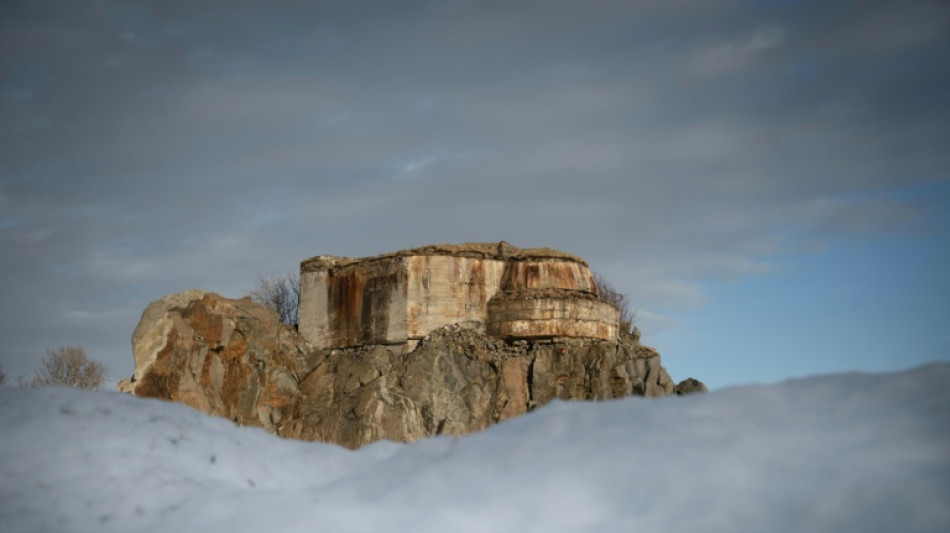
-
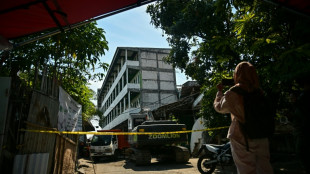 Indonesia school collapse toll hits 67 as search ends
Indonesia school collapse toll hits 67 as search ends
-
Dodgers hold off Phillies, Brewers on the brink

-
 Lawrence sparks Jaguars over Chiefs in NFL thriller
Lawrence sparks Jaguars over Chiefs in NFL thriller
-
EU channels Trump with tariffs to shield steel sector
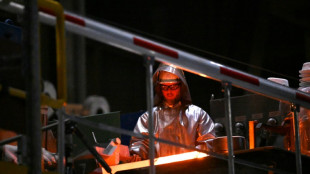
-
 Labuschagne out as Renshaw returns to Australia squad for India ODIs
Labuschagne out as Renshaw returns to Australia squad for India ODIs
-
Open AI's Fidji Simo says AI investment frenzy 'new normal,' not bubble

-
 Tokyo stocks hit new record as Asian markets extend global rally
Tokyo stocks hit new record as Asian markets extend global rally
-
Computer advances and 'invisibility cloak' vie for physics Nobel

-
 Nobel literature buzz tips Swiss postmodernist, Australians for prize
Nobel literature buzz tips Swiss postmodernist, Australians for prize
-
Dodgers hold off Phillies to win MLB playoff thriller

-
 China exiles in Thailand lose hope, fearing Beijing's long reach
China exiles in Thailand lose hope, fearing Beijing's long reach
-
Israel marks October 7 anniversary as talks held to end Gaza war

-
 Indians lead drop in US university visas
Indians lead drop in US university visas
-
Colombia's armed groups 'expanding,' warns watchdog

-
 Shhhh! California bans noisy TV commercials
Shhhh! California bans noisy TV commercials
-
Trump 'happy' to work with Democrats on health care, if shutdown ends

-
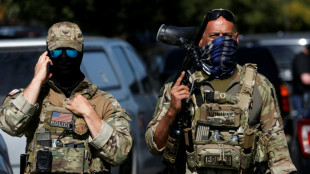 Trump says may invoke Insurrection Act to deploy more troops in US
Trump says may invoke Insurrection Act to deploy more troops in US
-
UNESCO board backs Egyptian for chief after US row

-
 Unreachable Nobel winner hiking 'off the grid'
Unreachable Nobel winner hiking 'off the grid'
-
Retirement or marketing gimmick? Cryptic LeBron video sets Internet buzzing

-
 CAF 'absolutely confident' AFCON will go ahead in protest-hit Morocco
CAF 'absolutely confident' AFCON will go ahead in protest-hit Morocco
-
Paris stocks slide amid French political upheaval, Tokyo soars

-
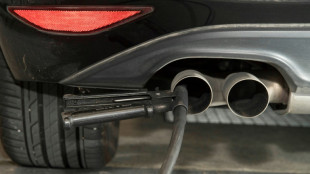 EU should scrap ban on new combustion-engine sales: Merz
EU should scrap ban on new combustion-engine sales: Merz
-
US government shutdown enters second week, no end in sight

-
 World MotoGP champion Marquez to miss two races with fracture
World MotoGP champion Marquez to miss two races with fracture
-
Matthieu Blazy reaches for the stars in Chanel debut

-
 Macron gives outgoing French PM final chance to salvage government
Macron gives outgoing French PM final chance to salvage government
-
Illinois sues to block National Guard deployment in Chicago
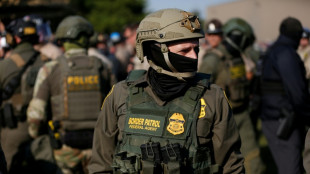
-
 Exiled Willis succeeds Dupont as Top 14 player of the season
Exiled Willis succeeds Dupont as Top 14 player of the season
-
Hamas and Israel open talks in Egypt under Trump's Gaza peace plan
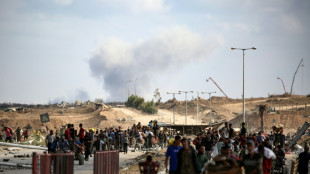
-
 Mbappe undergoing treatment for 'small niggle' at France camp: Deschamps
Mbappe undergoing treatment for 'small niggle' at France camp: Deschamps
-
Common inhalers carry heavy climate cost, study finds
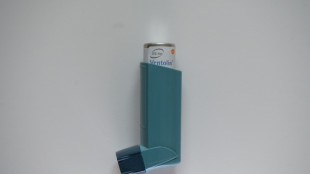
-
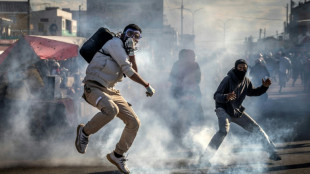 Madagascar president taps general for PM in bid to defuse protests
Madagascar president taps general for PM in bid to defuse protests
-
UEFA 'reluctantly' approves European league games in US, Australia

-
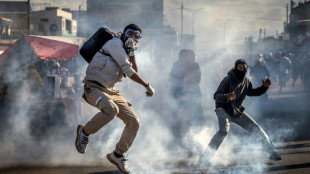 Hundreds protest in Madagascar as president to announce new premier
Hundreds protest in Madagascar as president to announce new premier
-
Greta Thunberg lands in Greece among Gaza flotilla activists deported from Israel

-
 UNESCO board backs Egyptian ex-minister for top job: official
UNESCO board backs Egyptian ex-minister for top job: official
-
Facing confidence vote, EU chief calls for unity

-
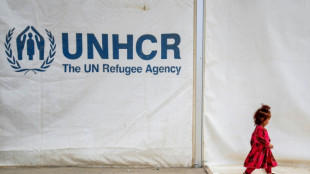 Cash-strapped UNHCR shed 5,000 jobs this year
Cash-strapped UNHCR shed 5,000 jobs this year
-
Mbappe to have 'small niggle' examined at France camp: Deschamps

-
 Brazil's Lula asks Trump to remove tariffs in 'friendly' phone call
Brazil's Lula asks Trump to remove tariffs in 'friendly' phone call
-
'Terrible' Zverev dumped out of Shanghai by France's Rinderknech

-
 What are regulatory T-cells? Nobel-winning science explained
What are regulatory T-cells? Nobel-winning science explained
-
OpenAI signs multi-billion dollar chip deal with AMD

-
 Salah under fire as Liverpool star loses his spark
Salah under fire as Liverpool star loses his spark
-
Paris stocks drop as French PM resigns, Tokyo soars

-
 ICC finds Sudan militia chief guilty of crimes against humanity
ICC finds Sudan militia chief guilty of crimes against humanity
-
Zverev dumped out of Shanghai Masters by France's Rinderknech

-
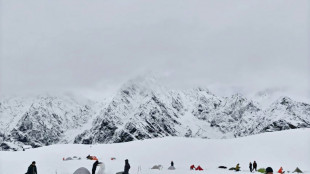 One hiker dead, hundreds rescued after heavy snowfall in China
One hiker dead, hundreds rescued after heavy snowfall in China
-
Hundreds stage fresh anti-government protests in Madagascar
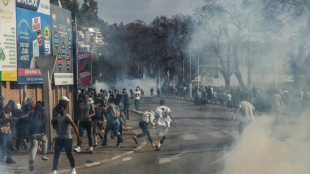

Fortress Europe? The Nazi 'wall' that failed to prevent D-Day
For the 80th D-Day landings anniversary, AFP travelled the coastlines from northern Norway to southern France to find out what became of the German-built Atlantic Wall defences aimed at keeping the Allies at bay.
Fearing an Allied invasion of occupied Europe, Adolf Hitler ordered in 1942 the building of a 5,000-kilometre (3,100-mile) coastal defence system studded with bunkers, gun emplacements, tank traps and other obstacles.
AFP photojournalist Olivier Morin spent three weeks documenting the remnants of the supposedly impregnable fortifications, which were breached by the Allies on D-Day.
Here is a brief recap of the wall:
- 300,000 labourers -
More than 20 million cubic metres of concrete and 1.2 million tonnes of steel went into building thousands of fortifications linked by barbed wire along the Atlantic and North Sea shores, from France through Belgium, the Netherlands and Denmark to Norway.
Over 300,000 workers of all nationalities worked on the French part alone, some of them prisoners press-ganged into labour but also hard-up people desperate for work, or German factory workers.
Entire communities were forced off their land to make way for Hitler's biggest defence project, which took over two years to build.
In the Dutch capital of Amsterdam, thousands of homes, seven schools, three churches and two hospitals were demolished in the name of defending "Fortress Europe".
- 'Hedgehogs' and 'asparagus' -
In 1944, with an Allied invasion appearing imminent, German Field Marshal Erwin Rommel was entrusted with boosting the defences.
The Allies had managed to dupe the Nazis into thinking that they were planning a landing on France's north coast, near Calais, which meant they had left long stretches of the coast wide open for invasion, including what would become the Normandy landing beaches.
Rommel rushed to station more than 2,000 tanks, assault cannons and tank destroyers along the Normandy coastline, including "Czech hedgehogs" -- spiky steel anti-tank obstacles -- and wooden poles nicknamed "Rommel's Asparagus" used to try to prevent gliders and paratroops from landing.
Over five million mines were planted along the beaches. But it was too little, too late.
- Breached within hours -
The Atlantic Wall proved woefully inadequate in the face of the planning that went into the D-Day landings of June 6, 1944.
That evening, 156,000 Allied soldiers punched a hole in the defences of 80,000 German soldiers.
The United States suffered heavy losses, especially on Omaha beach, where its soldiers found themselves trapped on the narrow strip beneath high cliffs of sand and stone.
Despite the challenges, the British, French, Americans and Canadians took just days to establish a beachhead in Normandy, which they used to land 800,000 troops and over 100,000 vehicles by the end of June.
Within 11 months, Germany had surrendered.
- Airbnb rentals -
Remnants of the Atlantic Wall remain scattered along the coast of Europe but many have been swallowed by the sand or sunk into the sea.
Some have been converted into museums, as at Batz-sur-Mer in France, Ostend in Belgium and Noordwijk in the Netherlands.
In the northern French city of Cherbourg, graffiti artists have transformed one bunker into a spaceship, while in the Brittany village of Saint-Pabu another has been renovated and turned into a Airbnb rental.
The Dutch government launched in 2014 an annual "Bunker Day" when the walls of the fortifications are thrown open to the public.
M.Betschart--VB

